Abstract
The relationship between fungal activity and staining with fluorescein diacetate (FDA) was investigated by growing Penicillium citrinum and Rhizoctonia solani in submerged batch cultures at different initial glucose concentrations and aeration rates. A modified FDA staining method, similar to the Jones and Mollison technique (P. Jones and J. Mollison, J. Gen. Microbiol. 2:54-69, 1948), was developed to assess both total and FDA-stained hyphae. In previous studies, soil hyphae stained with FDA were considered viable. However, determination of a quantitative relationship between FDA staining and fungal activity is necessary before such an assumption can be made. Growth rates and the rate of change in the percentage of FDA-stained hyphae were significantly correlated. The regression equation calculated for the relationship was: growth rate (mg . ml-1 . h-1) = 0.34 + 1.1 (rate of change in the percentage of FDA-stained hyphae [. ml-1 . h-1]). Changes in activity as measured by O2 utilization, glucose utilization, and biomass correlated significantly with changes in the percentage of FDA-stained hyphae, although the relationships among these parameters were different for each fungal species. Fungal growth stage was also correlated with the percentage of FDA-stained hyphae. Staining was 10% or greater during fungal growth and less than 10% during the late growth, stationary, and death phases. Thus, the rate of change in the percentage of FDA-stained hyphae can be used to predict fungal activity rate changes for single fungal cultures and growth rates for mixed fungal cultures, and the growth stage can be assessed by the percentage of FDA-stained hyphae.
Full text
PDF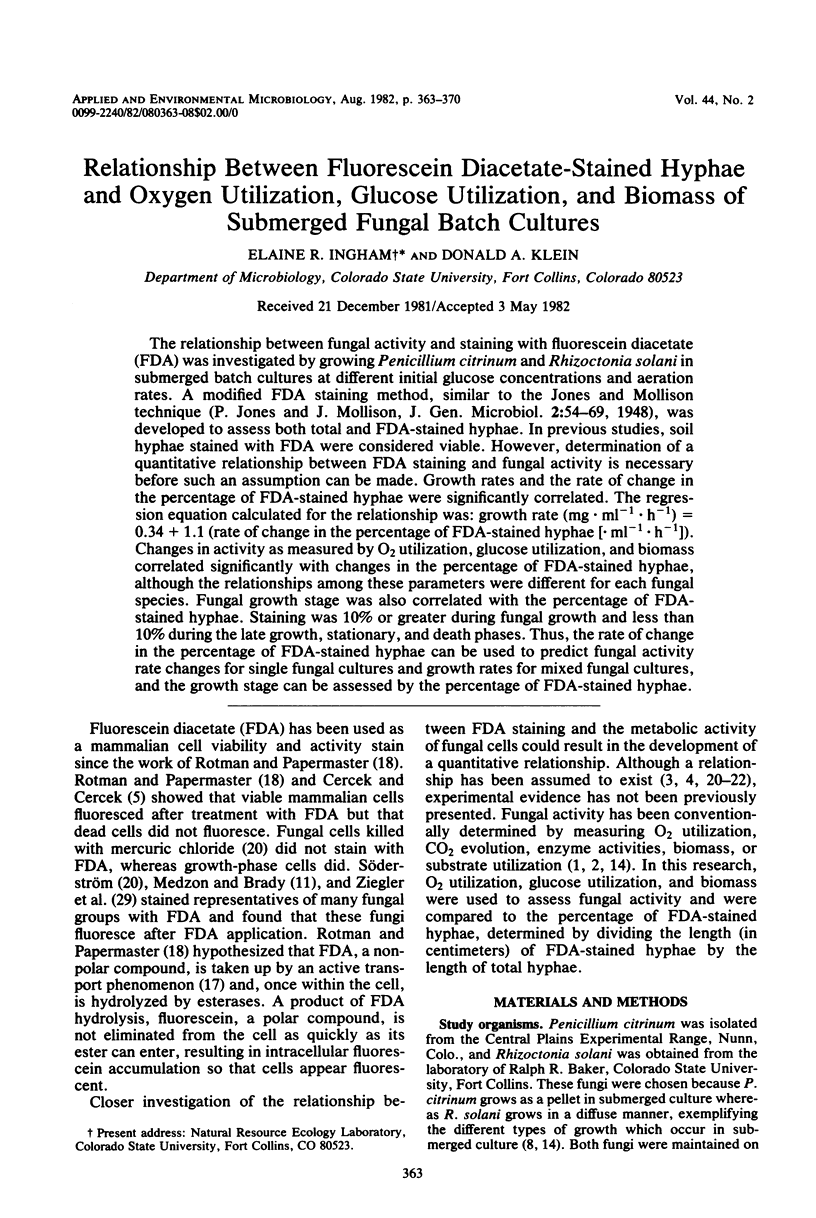
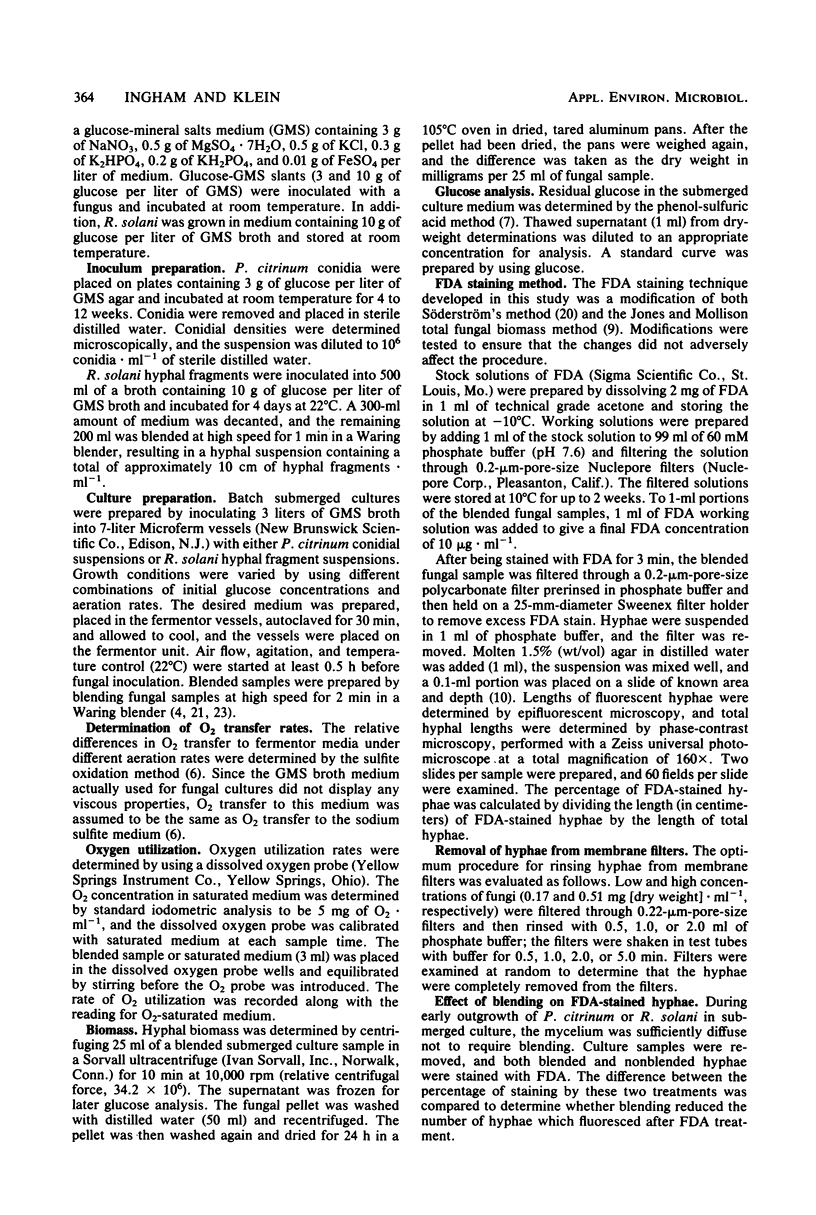
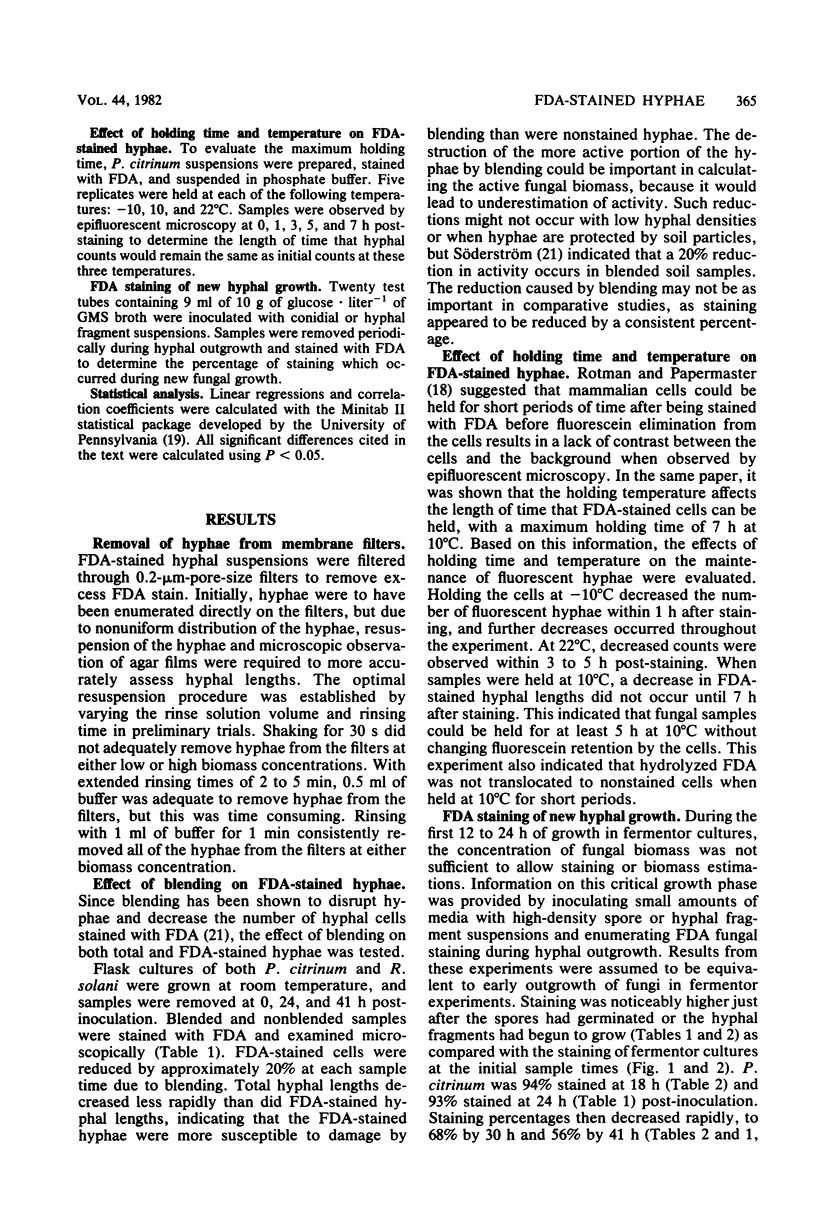
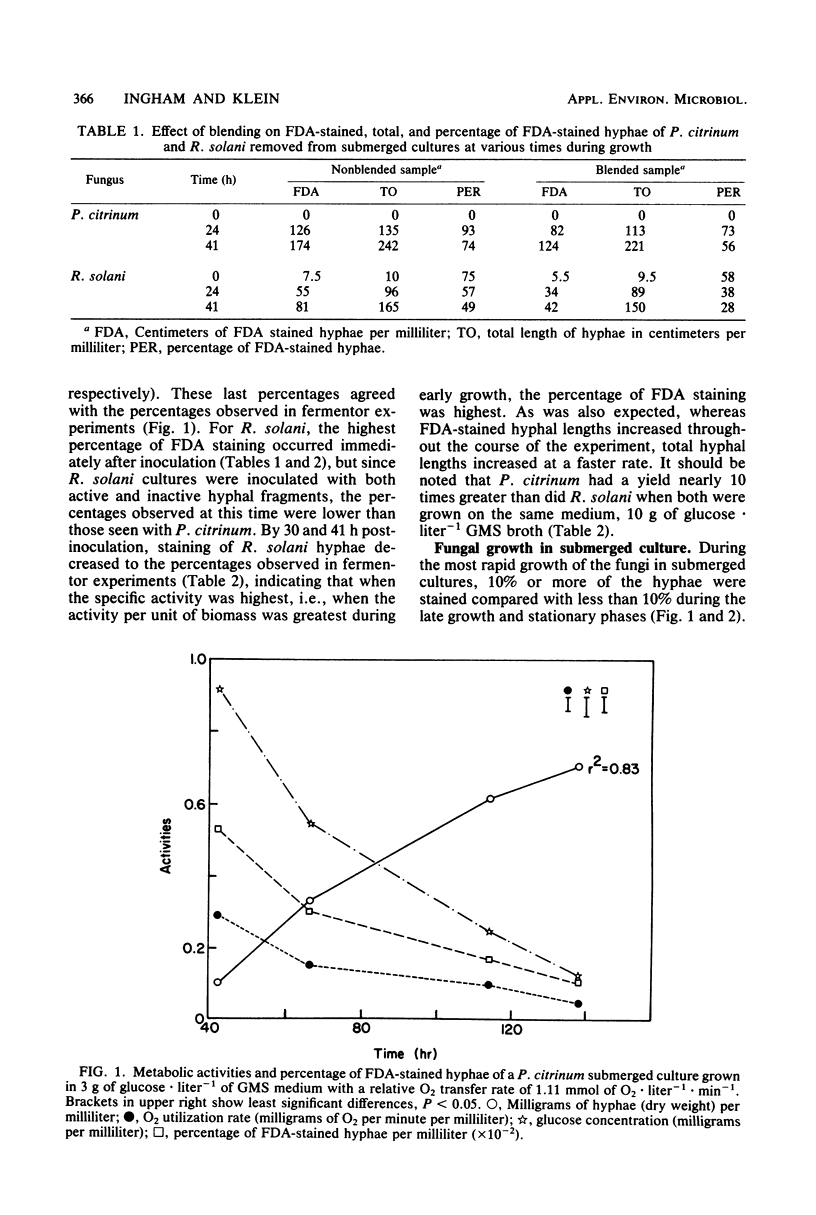
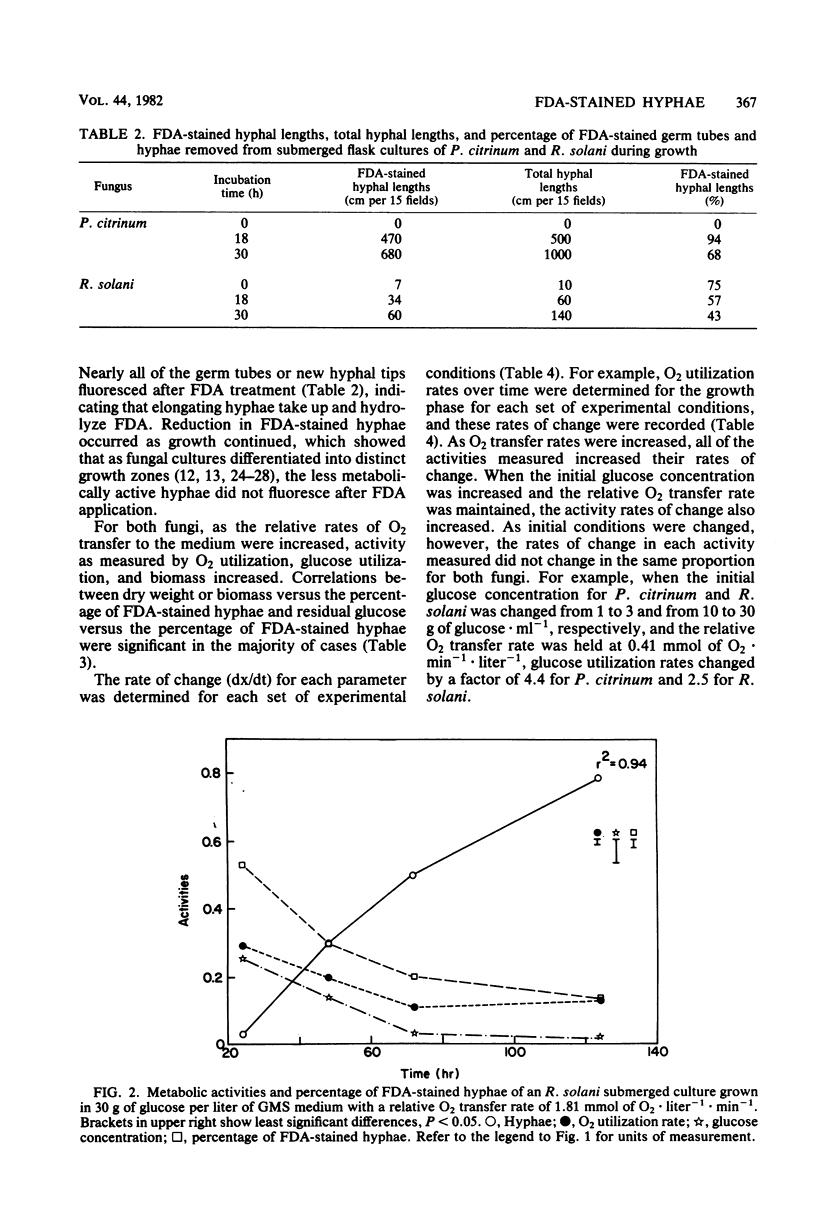
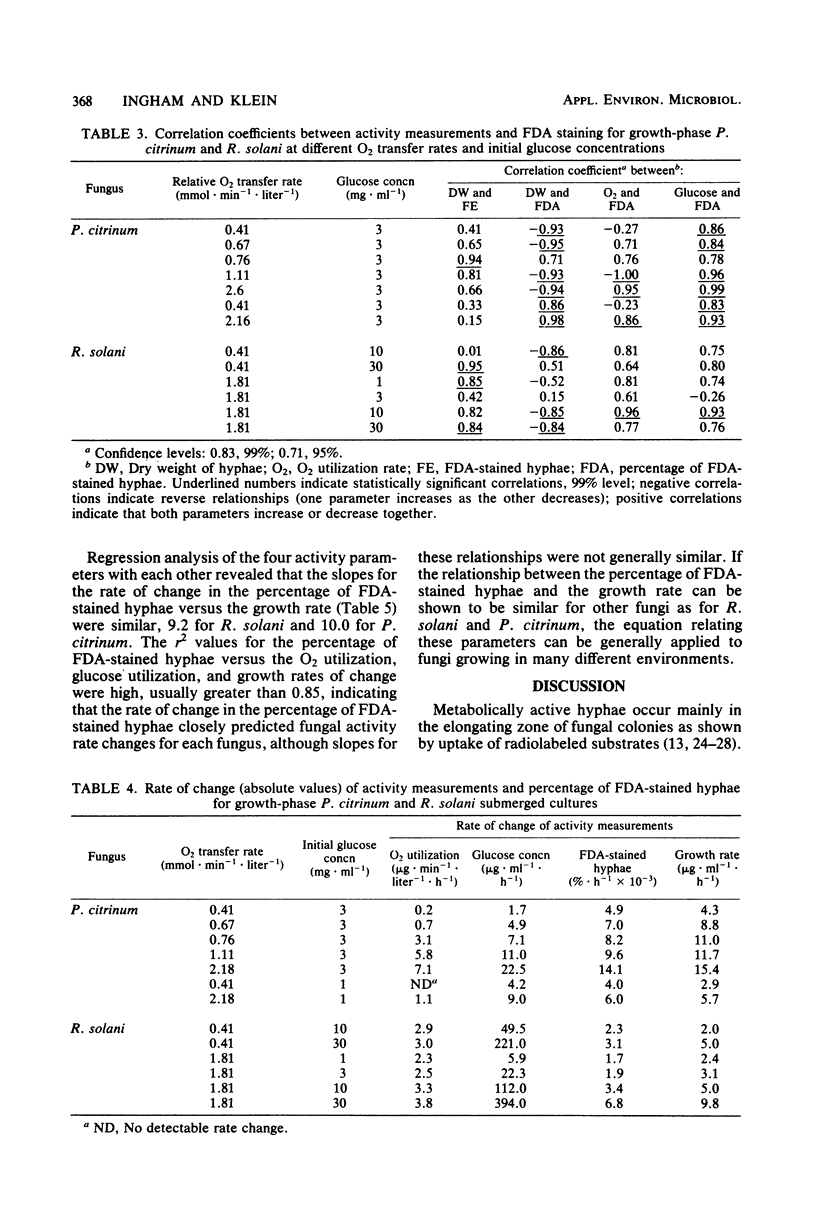
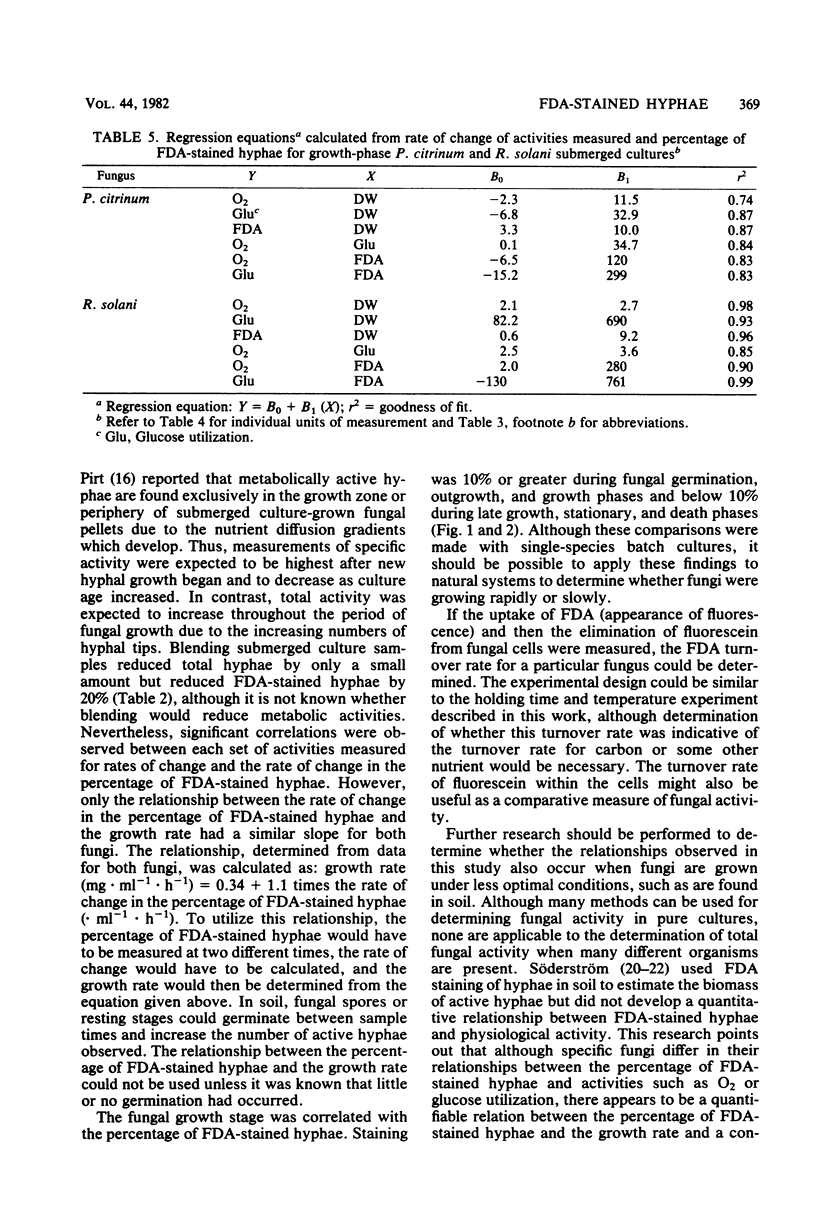
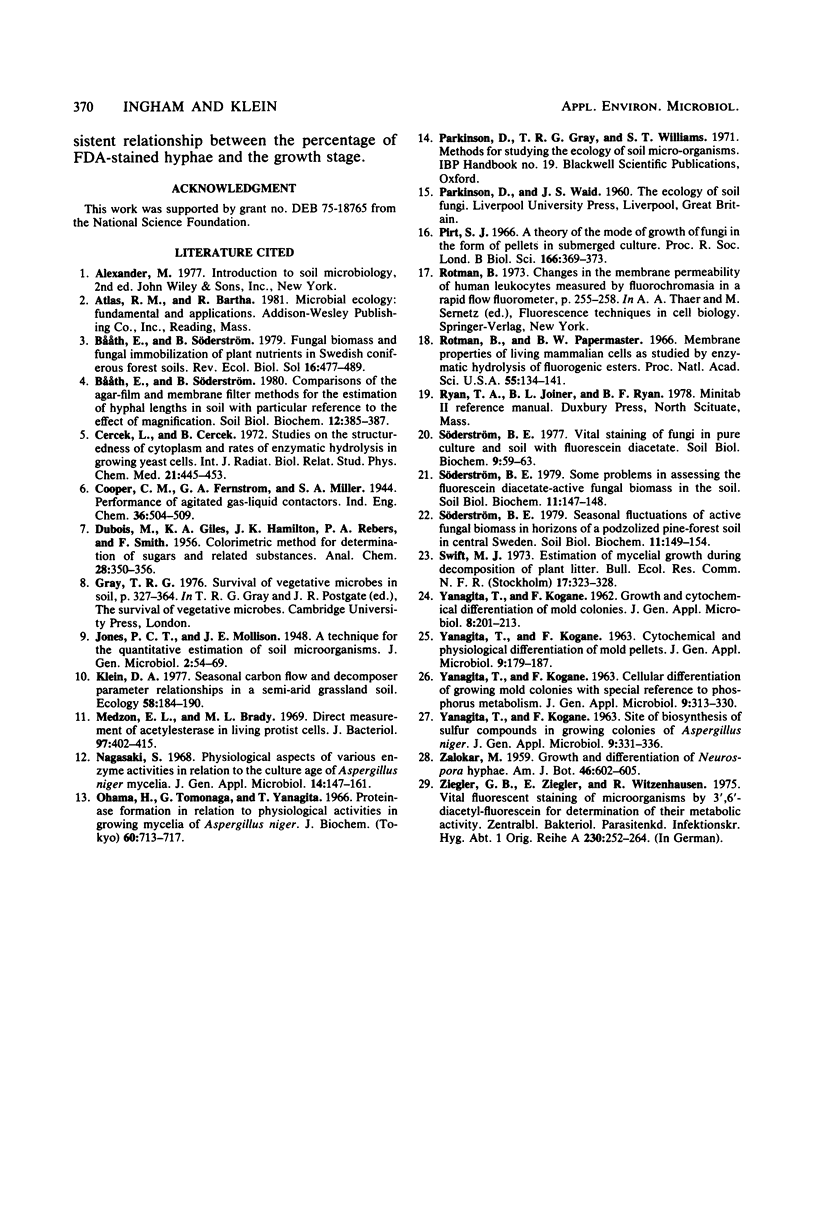
Selected References
These references are in PubMed. This may not be the complete list of references from this article.
- Cercek L., Cercek B. Studies on the structuredness of cytoplasm and rates of enzymatic hydrolysis in growing yeast cells. I. Changes induced by ionizing radiation. Int J Radiat Biol Relat Stud Phys Chem Med. 1972 May;21(5):445–453. doi: 10.1080/09553007214550521. [DOI] [PubMed] [Google Scholar]
- Medzon E. L., Brady M. L. Direct measurement of acetylesterase in living protist cells. J Bacteriol. 1969 Jan;97(1):402–415. doi: 10.1128/jb.97.1.402-415.1969. [DOI] [PMC free article] [PubMed] [Google Scholar]
- Ohama H., Tomonaga G., Yanagita T. Proteinase formation in relation to physiological activities of growing mycelia of Aspergillus niger. J Biochem. 1966 Dec;60(6):713–717. doi: 10.1093/oxfordjournals.jbchem.a128498. [DOI] [PubMed] [Google Scholar]
- Pirt S. J. A theory of the mode of growth of fungi in the form of pellets in submerged culture. Proc R Soc Lond B Biol Sci. 1966 Dec 13;166(1004):369–373. doi: 10.1098/rspb.1966.0105. [DOI] [PubMed] [Google Scholar]
- Rotman B., Papermaster B. W. Membrane properties of living mammalian cells as studied by enzymatic hydrolysis of fluorogenic esters. Proc Natl Acad Sci U S A. 1966 Jan;55(1):134–141. doi: 10.1073/pnas.55.1.134. [DOI] [PMC free article] [PubMed] [Google Scholar]
- Ziegler G. B., Ziegler E., Witzenhausen R. Nachweis der Stoffwechselaktivität von Mikroorganismen durch Vital-Fluorochromierung mit 3',6'-Diacetylfluorescein. Zentralbl Bakteriol Orig A. 1975;230(2):252–264. [PubMed] [Google Scholar]


